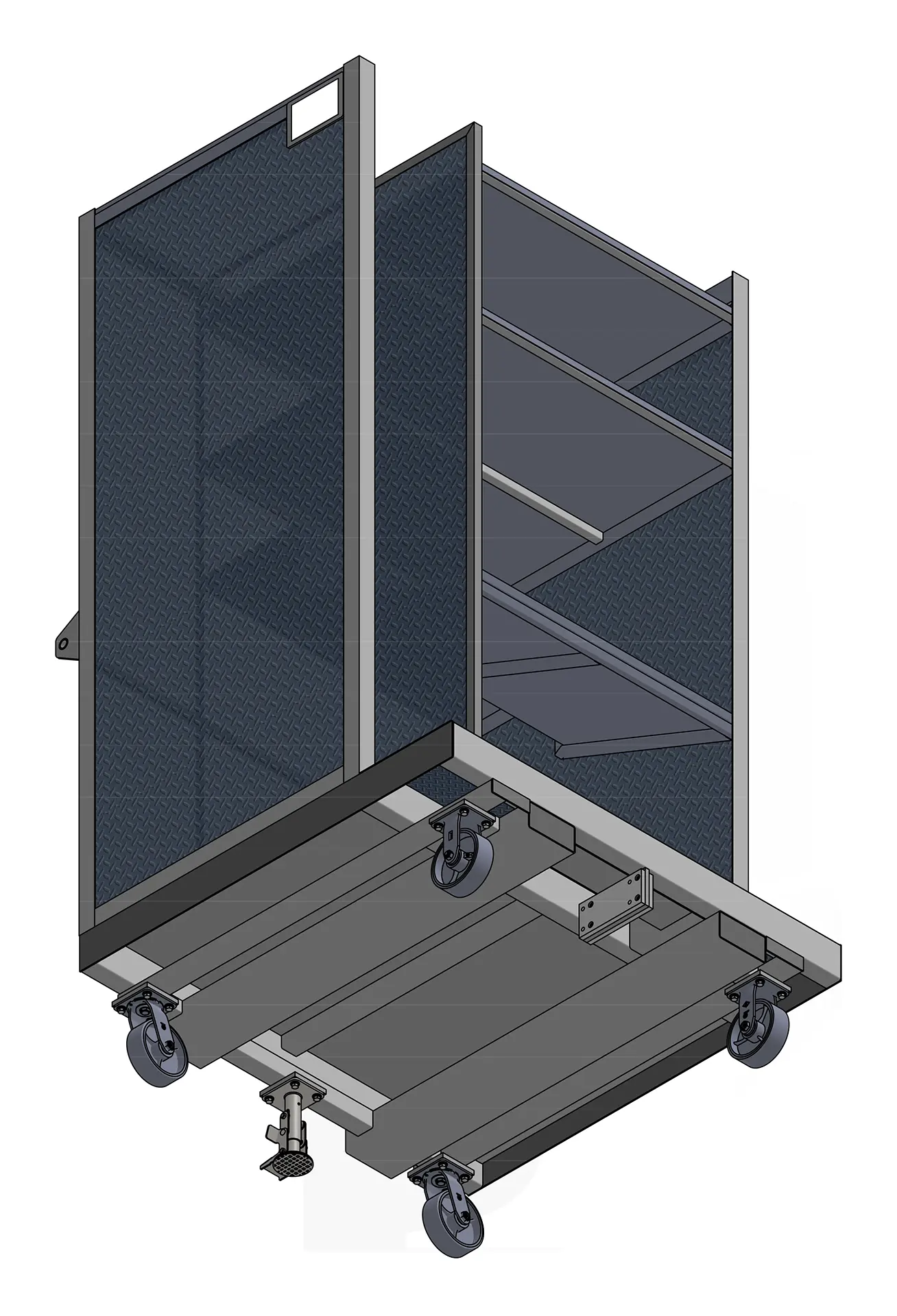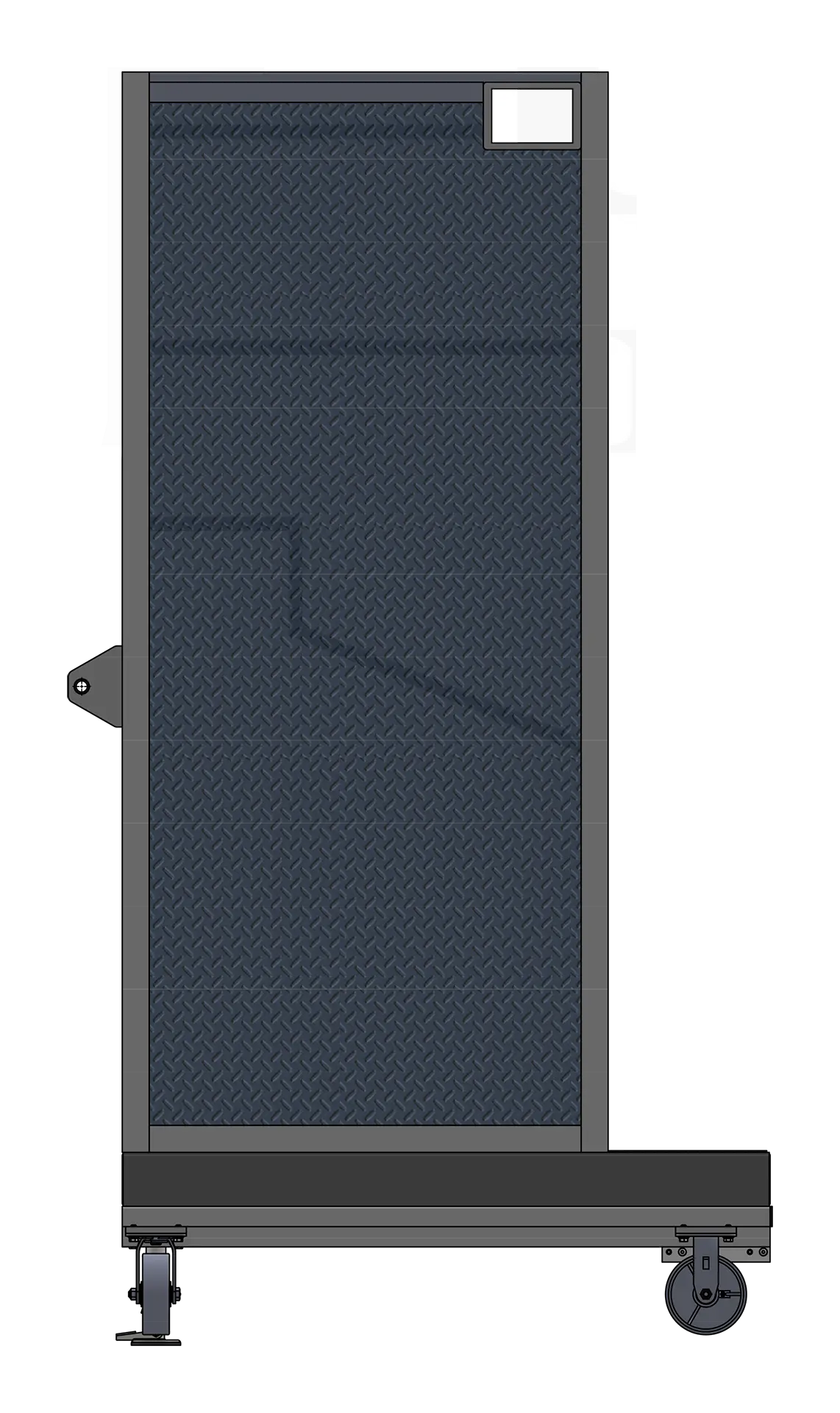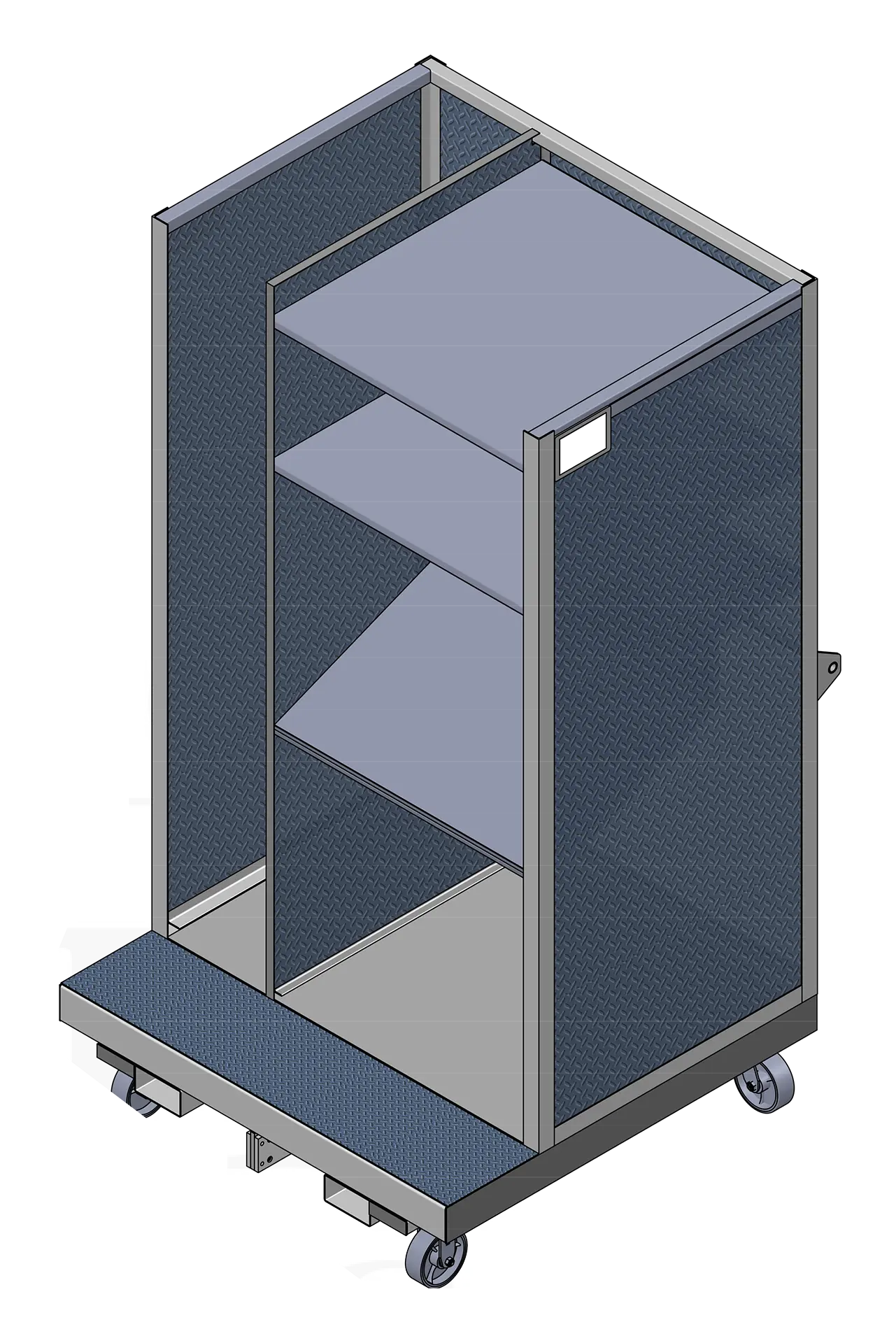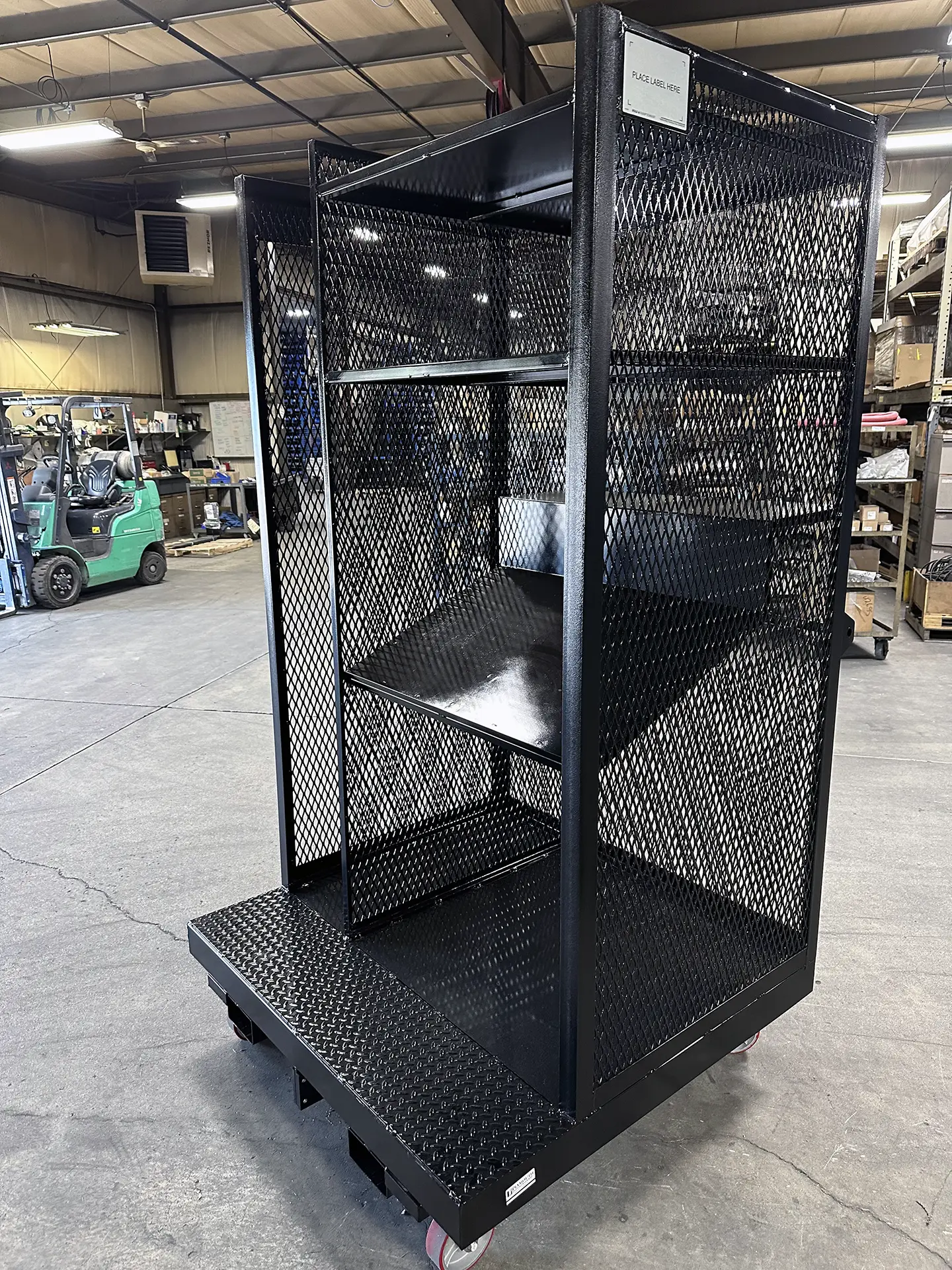
Plymouth Industries specializes in prototyping custom material handling solutions.
From durable steel bins to versatile racks, efficient carts to robust pallets, our products prioritize functionality, efficiency, and durability. Our engineering team’s creativity is rooted in practicality, ensuring that each creation seamlessly integrates into your manufacturing and logistical operations.
Customization: Tailoring to Your Specific Needs
One of the most significant advantages of prototyping racks, carts, and other material handling equipment is the ability to customize them according to your specific requirements. Adjustable shelving, for instance, allows for dynamic storage that can adapt to items of varying sizes. Moreover, incorporating wheels into the design adds mobility, enabling seamless transport within your facility.
Material Selection: Ensuring Durability and Strength
When prototyping, selecting the right materials is paramount. Different industries demand different levels of durability, hygiene, and weight-bearing capacity. The choice of material can significantly impact the longevity and performance of the final product.
Stainless Steel for Hygiene-Critical Environments
In environments such as healthcare and food industries, hygiene is non-negotiable. Stainless steel, with its corrosion resistance and ease of cleaning, is a prime choice for these sectors. Prototyping allows for testing the compatibility of stainless steel racks and carts with stringent hygiene standards.
High-Strength Steel for Heavy-Duty Applications
Industries dealing with heavy items, such as manufacturing and construction, require material handling equipment that can withstand substantial weight. Prototyping with high-strength steel variants ensures that the final product will be up to the task, maintaining structural integrity even under heavy loads.
The Prototyping Process: From Concept to Reality
Turning an idea into a functional prototype involves a series of well-defined steps. This process not only brings your vision to life but also allows for adjustments and improvements along the way.
Initial Design and Idea Generation
It all begins with a concept. During this phase, we brainstorm ideas and outline the fundamental features. This stage sets the direction for the entire prototyping process.
Computer-Aided Design (CAD) and Virtual Prototyping
With the concept in mind, we create a digital representation of your prototype using CAD software. Virtual prototyping enables you to visualize the product, identify potential concerns, and make necessary alterations before moving on to physical production.
Physical Prototyping and Testing
Once the virtual prototype is refined, a physical prototype of the product is produced, allowing us to assess its real-world functionality. This step often involves multiple iterations to fine-tune details and ensure optimal performance.
Advantages of Prototyping
The prototyping approach offers a range of benefits that contribute to the success of your rack, cart, and material handling solutions.
Flexibility in Design Modifications
Prototyping allows us to experiment with various design modifications without committing to full-scale production. This flexibility enables us to optimize the product’s form and function before mass manufacturing begins.
Cost-Effective Solution in the Long Run
Although prototyping involves upfront costs, it can lead to substantial long-term savings. Identifying and rectifying design flaws early on prevents costly modifications after the product is already in use.
Adaptation to Changing Needs
In dynamic industries, needs evolve rapidly. Prototyping allows us to adapt to these changes quickly. Whether it’s accommodating new inventory sizes or integrating advanced features, the prototyping process streamlines adaptation.
Industries Benefiting from Prototyped Heavy-duty Material Hanlding Equipment
The versatility of prototyped racks, carts, bins, baskets, and pallets makes them indispensable across various industries.
- Agriculture: Storing and Transporting Tools, Products, and Equipment
- Healthcare: Organized Medical Supply Transport
- Logistics: Shipping Density and Protection
- Manufacturing: Assembly Line Efficiency
- Retail: Display and Storage Solutions
- Hospitality and Food Service: Bulk Storage and Transport
FAQs
What is the typical lead time for creating a prototype?
Prototyping lead times vary depending on complexity. Simple designs might take 2-4 weeks, while more intricate solutions can take longer.
Can you make design changes after the prototype is built?
Yes, that’s the beauty of prototyping. Changes can be made based on testing and your feedback before finalizing the design.
Are there limitations to the customization options?
While prototyping offers extensive customization, certain design changes might be constrained by the structural integrity or manufacturing feasibility.
How can you ensure the prototype meets safety standards?
Our experts review the project during the design and testing phases to ensure your prototype adheres to all necessary regulations.
What role does digital prototyping play in the process?
Digital prototyping through CAD software allows us to visualize the product and identify potential issues before moving on to physical prototyping, saving time and resources.
Choosing the Right Partner
Through thoughtful design, material selection, and iterative testing, prototypes turn into solutions that become the backbone of efficient operations. Selecting an experienced partner like Plymouth Industries is crucial. We have a proven track record and understand industry-specific requirements.




